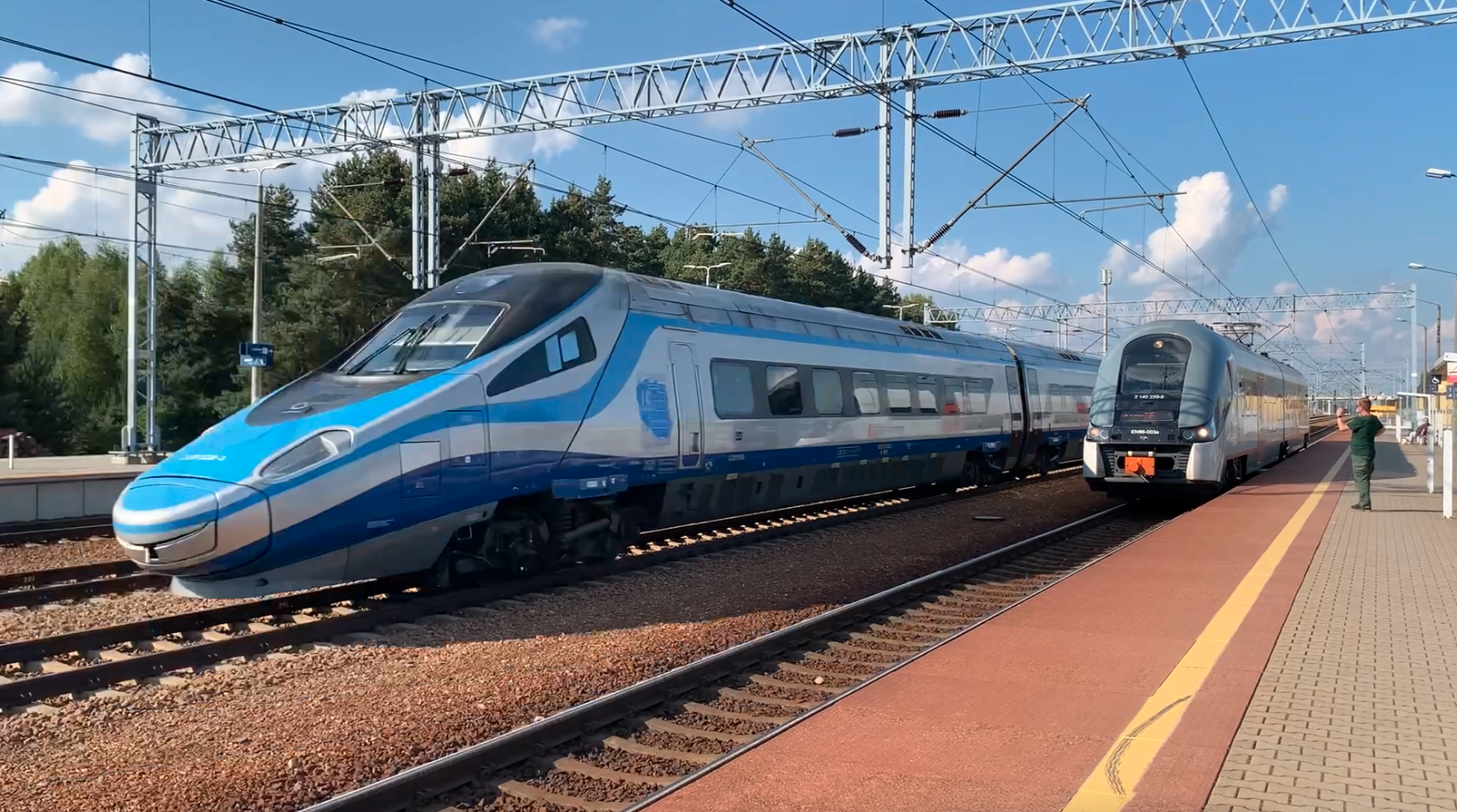Włoszczowa 2025-10-03
PKP Włoszczowa Północ.
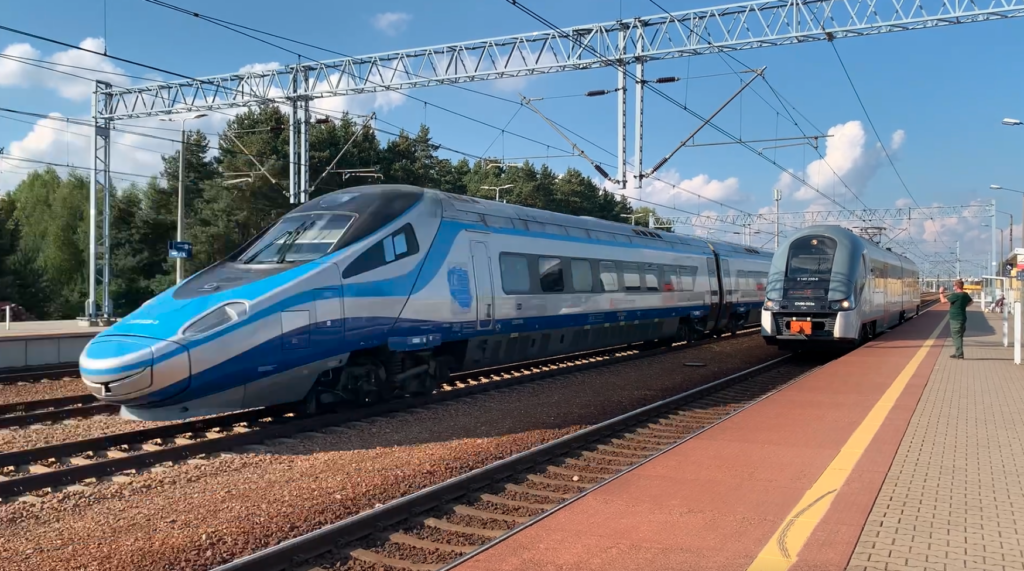
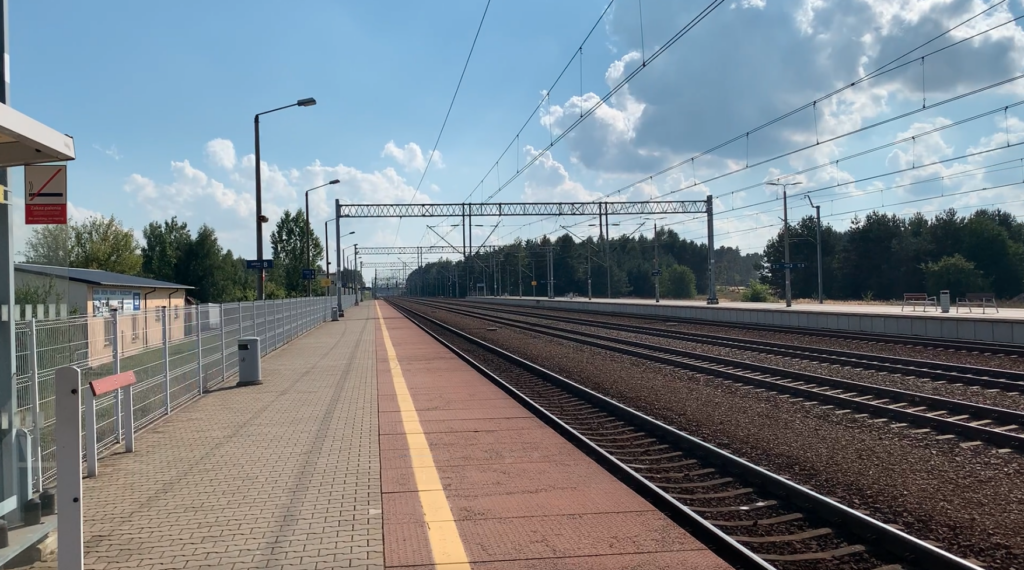
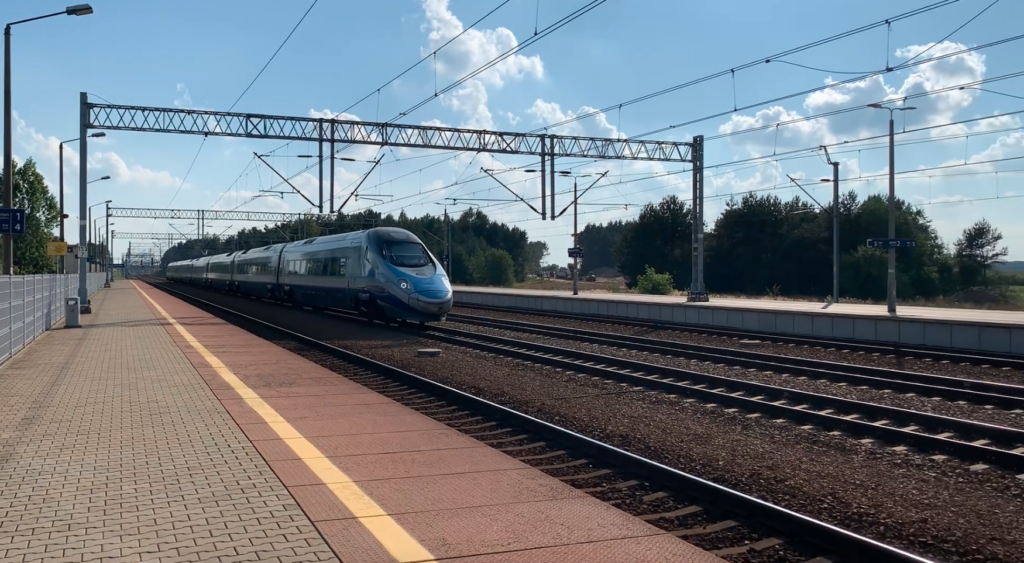
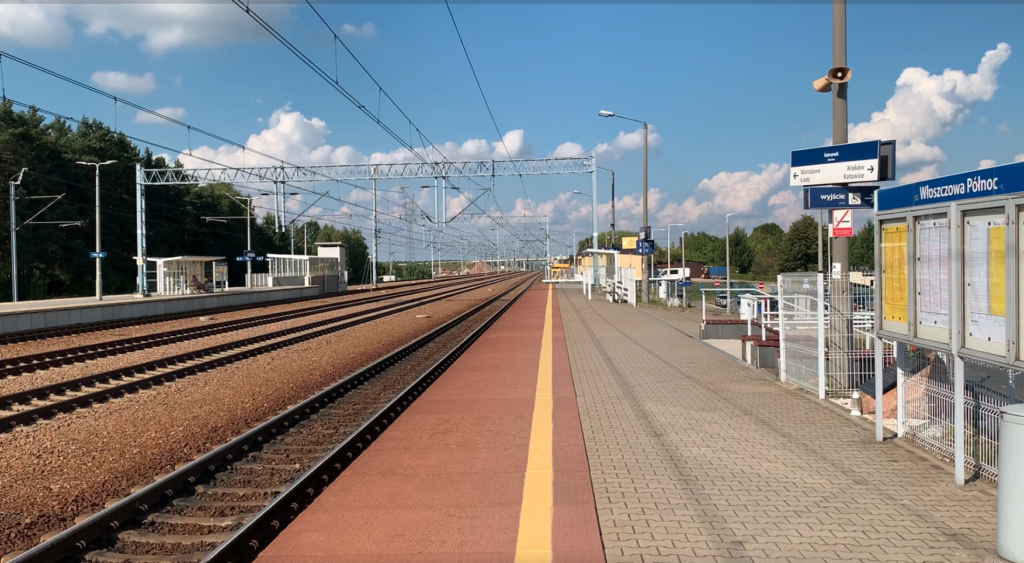
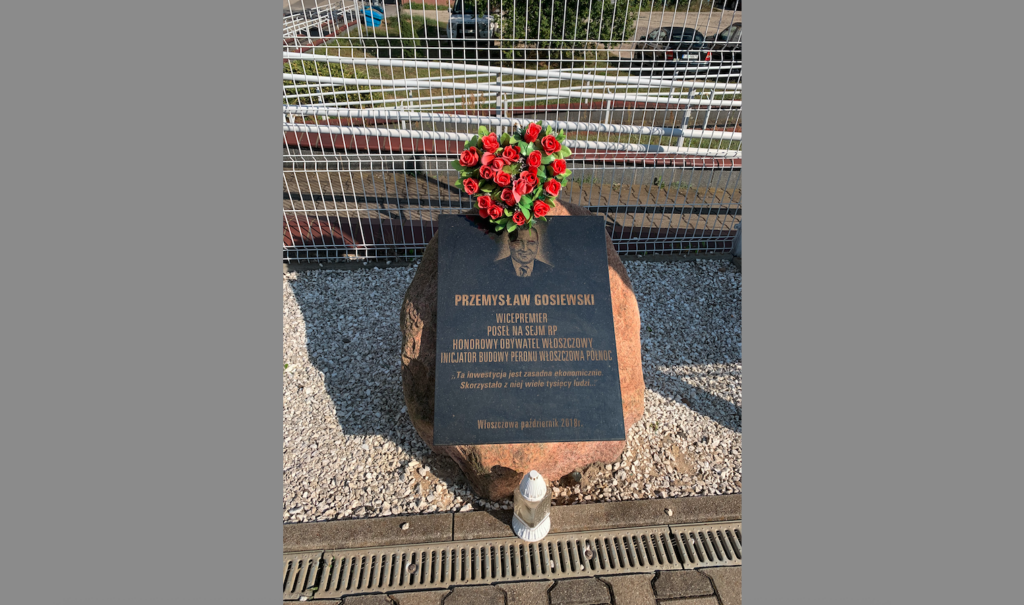
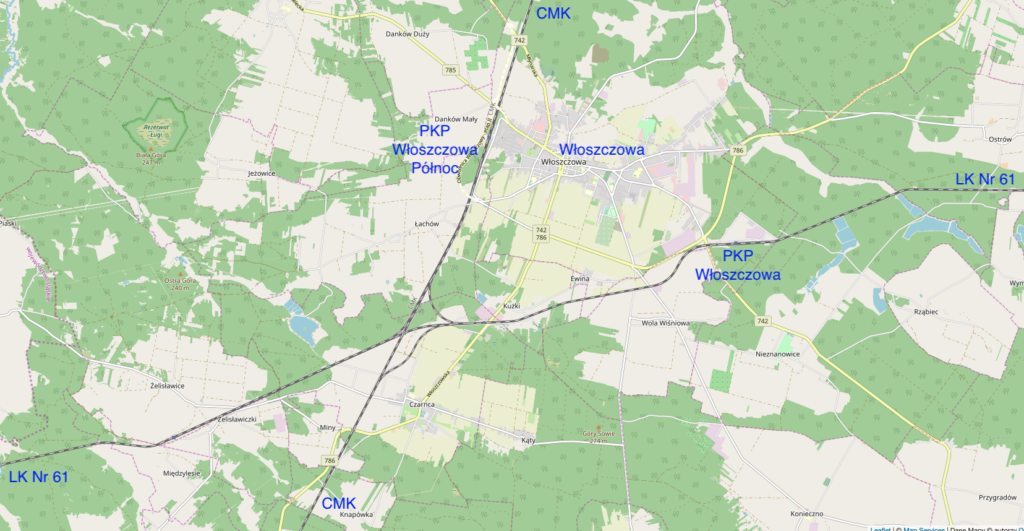
Włoszczowa is a town in the Świętokrzyskie Voivodeship, located west of Kielce. The city is the seat of Włoszczowa County and an important local administrative, economic, and cultural center. Włoszczowa is located in the historical Lesser Poland region. Geographically, Włoszczowa lies within the Włoszczowa Basin, surrounded by forests and agricultural lands.
The town has a long history. The first mention of Włoszczowa dates back to 1154, when Henry of Sandomierz gave a town called Vloszcova to the Order of Saint John from Zagość. The first written records of the settlement date back to the 15th century, and it was granted town rights in 1539 by King Sigismund the Old. The town contains remnants of defensive structures from the 16th century. From the 16th century onward, crafts developed significantly, primarily in clothmaking, the timber industry, and the food industry. Trade also flourished. The town became a local economic center, despite the lack of a well-developed road network. The railway reached Włoszczowa only in 1911. The town’s development was hampered by the partitioning powers during the partition of Poland. In the 19th century, the food industry, based on the grain grown here, flourished. Both world wars significantly damaged the town. Only after 1945 did the town experience a peaceful and stable development. The railway line between Kielce and Częstochowa had a significant impact on the city’s development. Between 1971 and 1977, the Central Railway Line (CMK) was constructed. However, it was the creation of a passenger railway station on the CMK that provided the impetus for the city’s further development. The city gained quick connections with Poland’s largest metropolises. In October 2006, the city gained an express rail link with Warsaw and Kraków. This decision was made as a result of the personal efforts of then-Minister Przemysław Gosiewski from the Chancellery of the Prime Minister of the Republic of Poland, a member of parliament from the local constituency, and an attorney. To this end, the Włoszczowa Północ station, located on the Central Railway Line running west of the city, was adapted to serve passenger trains.
Włoszczowa is home to plants processing aluminum, construction materials, and electrical equipment. In 1969, Włoszczowa’s largest enterprise, Zakład Stolarki Budowlanej Stolbud Włoszczowa, was established. In 1980, a new hospital opened, one of the first in Poland, named after John Paul II, during the communist era. A nationally renowned dairy factory, the Włoszczowa Dairy Cooperative, operates within the town.
The town boasts several religious monuments that still serve their purpose. In 1642, a Marian apparition took place here. The town’s urban layout dates back to the 16th century. The building of Primary School No. 1 was built in 1922 and served as a Germanic field hospital during the occupation. The surrounding forests bear witness to the Germanic murders of hundreds of Poles. After the war, a monument was erected to commemorate the victims murdered by Germanic people.
On December 31, 2024, the population of Włoszczowa was 9,467. Until 1939, nearly half of the residents were of Jewish faith. The town’s area is 30.30 km². The name “Włoszczowa” derives from the Old Polish name Włoszcz or Włost. Initially, it referred to the settlement’s inhabitants, not the town itself, as confirmed by the oldest records from the 14th and 15th centuries, which refer to people such as Piotr or Jakusz. The town’s name is correctly declined as a noun, like Częstochowa, with the genitive form “Włoszczowy,” while the common adjectival form “Włoszczowej” is considered incorrect.
PKP Włoszczowa Północ.
On October 16, 2006, at 7:34 a.m., the first InterCity train stopped. This marked the beginning of service at Włoszczowa station, serving central Poland between Kielce and Częstochowa. It was a very good decision. Remember that in France, high-speed trains stop even at much smaller stations. The passenger stop was created thanks to the initiative and determination of Deputy Prime Minister and Member of Parliament, Przemysław Gosiewski, from the Chancellery of the Prime Minister of the Republic of Poland. In October 2018, a commemorative plaque commemorating Przemysław Gosiewski was unveiled at the Włoszczowa Północna stop. The construction of the stop cost a mere 3 million złoty.
Geographic coordinates: 50.856N 19.946E. Elevation: 244 m. Address: Śląska Street, Włoszczowa. Świętokrzyskie Voivodeship.
The station was built in 1974 as a technical station for the construction and maintenance of the Central Railway Main Line. It is located at km 154.390 of the Grodzisk Mazowiecki – Zawiercie line, halfway along its length. To the south, the CMK intersects with Kielce Głównej – Fosowskie line. Both lines, LK No. 4 and LK No. 61, form a railway junction, allowing trains to be routed in different directions. The Włoszczowa North – Żelisławice connecting line No. 572 extends from the Włoszczowa station.
The station houses two plants, currently known as PKP Polskie Linie Kolejowe (PKP Polish Railway Lines – Railway Lines Plant in Włoszczowa) and PGE Energetyka Kolejowa (PGE Southern Railway Plant).
When the passenger stop was built, a single platform with a single platform edge was first constructed. The Włoszczowa local government will contribute approximately PLN 300,000 to the platform’s construction. The total cost of the platform is approximately PLN 900,000. The second platform was built later and is an island platform with two edges. A ticket office is located within the station building (there is no station). In early November 2016, PKP PLK signed a contract with Trakcja PRKiI for the station’s modernization, including the construction of a second platform and adaptation to the future construction of the Czarnca – Włoszczowa Płn railway link No. 582. The second platform, along with an underpass, opened in 2018. In 2022, the Włoszczowa Północ – Czarnca link, connecting Kielce with the Central Main Line, opened.
Włoszczowa and Włoszczowa Północ stations are connected by a special bus line called Dworcówka, operated by PKS Włoszczowa, which also runs through the center of Włoszczowa. This line allows transfers from Herbski Station to CMK (Central Main Line), as well as connections from the city to both train stations.
Since 2017, passenger traffic at the station (passenger stop) has been steadily increasing. There was only a slump in 2020 due to the Chinese coronavirus pandemic. In 2017, the stop served up to 300 passengers per day. By 2024, this number had reached 1,000. It’s worth noting that the number of connections has been steadily increasing, not only regional but also long-distance. Currently (2025), you can even travel to Prague and Vienna from Włoszczowa Północ station.
From June 2023, using the newly built Włoszczowa Północ – Czarnca link (Railway Line No. 582), Regio trains from Kielce terminating at Włoszczowa station will extend their route and terminate at Włoszczowa Północ station. It was decided that all inter-regional trains running between Częstochowa and Kielce will stop at Włoszczowa Północ station. This increases Włoszczowa Północ station’s role as a hub, allowing for easy travel from Kielce to other countries, such as the Czech Republic. Włoszczowa Północ station serves as a regional hub for long-distance trains. Włoszczowa Północ station provides direct connections to major regional cities: Warsaw, Krakow, Katowice, Łódź, Gdańsk, Toruń, Bydgoszcz, Olsztyn, Szczecin, and Poznań. Additionally, it operates connections to tourist destinations such as Krynica-Zdrój, Muszyna-Zdrój, Wisła and Zakopane.
On October 2, 2025, 52 passenger trains departed from Włoszczowa Północ station. They served stations in Bohumin, Busko-Zdrój, Bydgoszcz Główna, Częstochowa, Gdynia Główna, Gliwice, Kielce Główny, Kraków Główny, Krynica-Zdrój, Łódź Fabryczna, Szczecin Główny, Warszawa Wschodnia, Zakopane, Zebrzydowice, and beyond.
Włoszczowa Północ station is significantly more important than its size would suggest. Its location on the CMK (Central Railway Main Line) is the main high-speed line in Poland. Thanks to this, residents of Włoszczowa and the Świętokrzyskie region have quick access to the fastest trains in the country: the ED250 Pendolino, as well as InterCity and TLK. This allows for quick connections to Warsaw (approximately 1 hour 30 minutes), Krakow (approximately 1 hour), and Katowice (approximately 1 hour). The Włoszczowa Północ station became a kind of regional gateway to all of Poland. The station is maliciously called a political station by the Volksdeutsche, communists, and Freemasons. In reality, it was a denial of modern transportation to ordinary Polish citizens. Over time, it became clear that it truly served the residents of the Włoszczowa County and neighboring municipalities. It is estimated that residents within a 30-40 km radius use the station. The station increased the mobility of residents of small towns, allowing them to use high-speed rail connections without having to travel to Kielce, Częstochowa, or Katowice. The station also became an important symbol of access to high-speed rail for peripheral areas and the fight against social exclusion.
Written by Karol Placha Hetman
